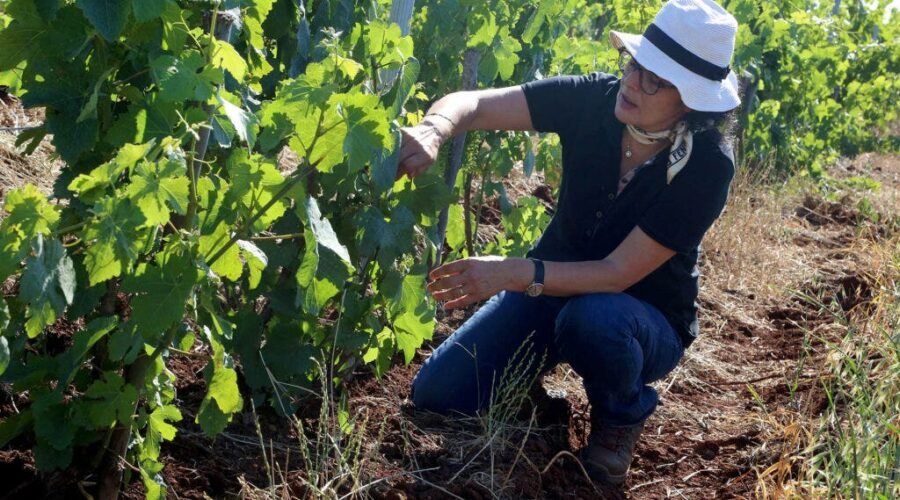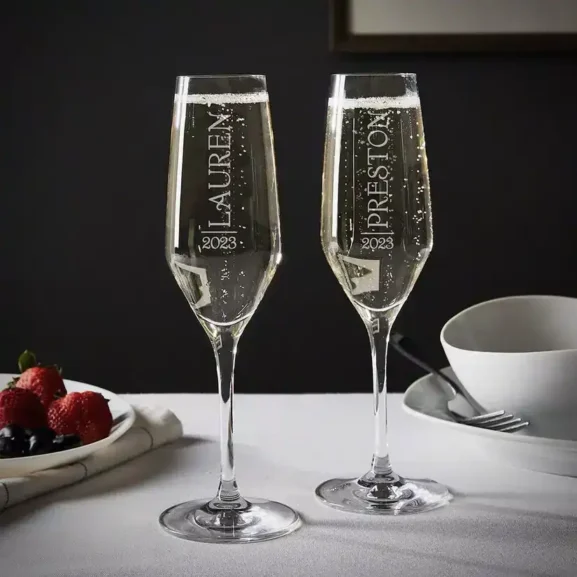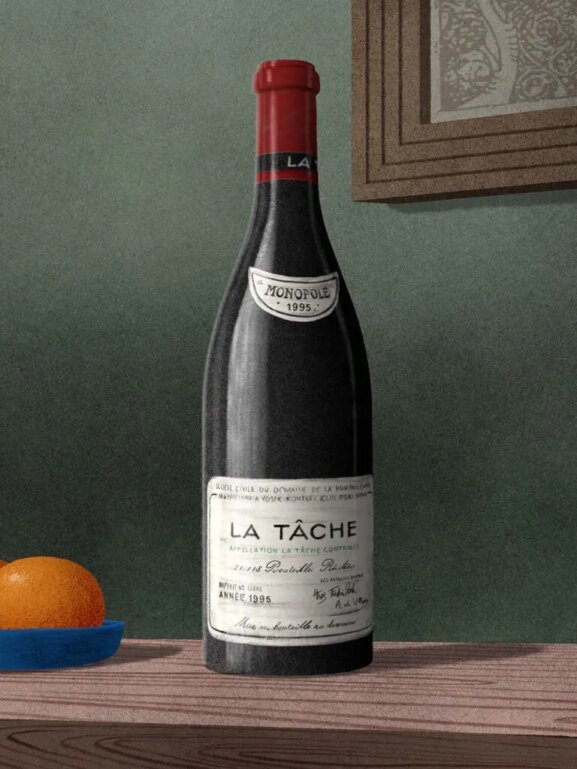Moroccan Wine Is Ready for Its Close-Up
For winemaking countries on the eastern and southern edges of the Mediterranean basin, it can’t be easy living in the shadow of Europe. But right at the foot of the Iberian Peninsula, just a stone’s throw away from Spain, sits an aspiring wine world contender: Morocco.
While the mere mention of African wine elicits an immediate beeline to the continent’s southern tip and South Africa’s staggeringly beautiful Western Cape, Morocco is well worth paying attention to.
As part of the Muslim world, perched on the edge of the Sahara Desert, it seems a perplexing locale for fine wine, but the country just might be on the precipice of breaking out with a broader international reputation. Surprisingly, though, viticulture in the region is an ancient story.
Wine’s Complex History in the North African Crossroad
Given its geographical and religious positioning, one might dismiss Moroccan wine culture out of hand, but doing so would ignore millennia of tradition.
“Viticulture here dates back over 2,000 years—long before the arrival of Islam,” says Christophe Gribelin, estate director at Villa Volubilia in the Moroccan winegrowing epicenter of Meknès. Islam and its complicated relationship with alcohol took root beginning in the 7th century, over time reducing the practice to a smoldering ember.
Over the past few hundred years, Morocco has had entanglements with—and subjugation to—its European neighbors. Most recently, as a controlled protectorate of France in the early 20th century, Morocco’s wine industry developed in tandem with French-ruled winegrowing colossus Algeria into an export workhorse.
Upon independence in 1956, Morocco’s understandable post-colonial politics led to an era of atrophy for wine. Yet over the last 25 years, foreign investment and tourism flowing into the country have spurred a resurgence.
// Create the element
var script_68c86acab447f = document.createElement(“script”);
script_68c86acab447f.innerHTML = `
window.googletag = window.googletag || {cmd: []};
googletag.cmd.push(function() {
var adType = “leaderboard”;
var mapping;
var lbmapping = googletag.sizeMapping()
.addSize([1024, 0], [[970, 250], [970, 90], [1, 1], [728, 90]])
.addSize([728, 0], [[728, 90], [1, 1]])
.addSize([320, 0], [[1, 1], [300, 50], [300, 100], [320, 50], [320, 100]])
.addSize([0, 0], [[1, 1], [320, 50]])
.build();; // Size mapping for leaderboard ads
var medrecmapping = googletag.sizeMapping()
.addSize([1024, 0], [[300, 600],[300, 250]])
.addSize([728, 0], [300, 250])
.addSize([320, 0], [[1, 1],[300, 250]])
.addSize([0, 0], [[1, 1], [300, 250]])
.build(); // Size mapping for med rectengle ads
if(‘/39808611/article_page/article_leaderboard_1’ == ‘/39808611/article_page/article_leaderboard_1’
|| ‘/39808611/article_page/article_leaderboard_1’ == ‘/39808611/article_page/article_leaderboard_2’
|| ‘/39808611/article_page/article_leaderboard_1’ == ‘/39808611/article_page/article_leaderboard_3’) {
mapping = googletag.sizeMapping()
.addSize([1920, 0], [[728, 90]]) // >= 1920px
.addSize([1440, 0], [[728, 90]]) // 1440px-1919px
.addSize([730, 0], [[300, 250]]) // 730px-1439px
.addSize([0, 0], [[320, 100], [320, 50], [300, 100], [300, 50], [300, 250]]) // Up to 729px
.build();
} else {
mapping = adType == ‘leaderboard’ ? lbmapping : medrecmapping;
}
googletag.defineSlot(‘/39808611/article_page/article_leaderboard_1’, [],
‘div-gpt-ad-68c86acab447f’).addService(googletag.pubads()).defineSizeMapping(mapping);
googletag.pubads().enableSingleRequest();
googletag.pubads().collapseEmptyDivs();
googletag.display(‘div-gpt-ad-68c86acab447f’);
});
`;
// Append the script to the body
document.body.appendChild(script_68c86acab447f);
“Today the wine industry operates within a framework of respect, discretion, and coexistence,” Gribelin says of its relationship with Islamic custom. He explains that while it’s not without its sensitivities, wine is generally accepted as an important socioeconomic component of Morocco’s modern identity. Now producing around 30 to 40 million bottles per annum, Morocco has accelerated past flagging neighbor Algeria as the continent’s second-most important viticultural capital behind South Africa.
Consequently, the country has been drawing underground acclaim as the crown jewel of Africa’s northern half.
Superlative Terroir, Troubling Times
Nahla Bahnini may be of Lebanese origin, but her heart was stolen by Morocco. “Agriculture is amazing in this country. I fell in love,” says the CEO and owner of Domaine de Baccari.
“Europeans have this vision of Moroccan wine,” she says. “When people taste it they’re surprised, because they’re not expecting to taste something good.”
She describes a duality in Moroccan wines: both lifted and floral, while contrastingly sun-soaked and spicy. “You have Syrah in France, you have Syrah in Morocco, and they’re completely different,” she says. “I grow Cabernet Franc, but it has nothing to do with any other place.”
Mikael Gabriel Rodriguez, wine consultant and current president of ASMA, the Moroccan Sommeliers Association, draws a direct link between this contradictory profile and the country’s unique terroir. It’s a complex land still frustratingly framed by outsiders as a monolithic desert.
“Morocco enjoys an exceptional geographical position: a Mediterranean coast, an Atlantic coast, mountains, deserts, high plateaus, and lush green hills in the north,” he says, offering excellent conditions for viticulture.
Likewise, this duality finds a parallel culturally: most Moroccan head winemakers are of European heritage. However, Rodriguez explains that many non-drinking Muslims have little to no problem working in all aspects of the industry. Bahnini is similarly deferential to her Muslim colleagues, citing them as essential.
Europeans have this vision of Moroccan wine. When people taste it they’re surprised, because they’re not expecting to taste something good.
Nahla Bahnini, owner of Domaine de Baccari
Currently, the biggest barriers to Moroccan winemaking are not cultural or geographic. Rather, trouble is at its doorstep in the form of climate change. Though the country possesses enviable viticultural conditions, it feels as if encroaching Saharan heat and drought are now a constant threat.
“With the drought we’ve had for six years, it’s really been a catastrophe,” Bahnini says. She adds that—at least for now—vineyard workers are implementing mitigation measures to adapt, with sun protection now critical. Positioning and exposure must be carefully considered, and the vine’s leafy canopy should shield the vulnerable crop. “You transform your approach,” she says. “The results have been positive.”
More heat-resistant varieties are also being planted, and as additional arrows in the quiver, Rodriguez points to the advantages to be had from complimentary forestry and cover crops.
// Create the element
var script_68c86acab6172 = document.createElement(“script”);
script_68c86acab6172.innerHTML = `
window.googletag = window.googletag || {cmd: []};
googletag.cmd.push(function() {
var adType = “leaderboard”;
var mapping;
var lbmapping = googletag.sizeMapping()
.addSize([1024, 0], [[970, 250], [970, 90], [1, 1], [728, 90]])
.addSize([728, 0], [[728, 90], [1, 1]])
.addSize([320, 0], [[1, 1], [300, 50], [300, 100], [320, 50], [320, 100]])
.addSize([0, 0], [[1, 1], [320, 50]])
.build();; // Size mapping for leaderboard ads
var medrecmapping = googletag.sizeMapping()
.addSize([1024, 0], [[300, 600],[300, 250]])
.addSize([728, 0], [300, 250])
.addSize([320, 0], [[1, 1],[300, 250]])
.addSize([0, 0], [[1, 1], [300, 250]])
.build(); // Size mapping for med rectengle ads
if(‘/39808611/article_page/article_leaderboard_2’ == ‘/39808611/article_page/article_leaderboard_1’
|| ‘/39808611/article_page/article_leaderboard_2’ == ‘/39808611/article_page/article_leaderboard_2’
|| ‘/39808611/article_page/article_leaderboard_2’ == ‘/39808611/article_page/article_leaderboard_3’) {
mapping = googletag.sizeMapping()
.addSize([1920, 0], [[728, 90]]) // >= 1920px
.addSize([1440, 0], [[728, 90]]) // 1440px-1919px
.addSize([730, 0], [[300, 250]]) // 730px-1439px
.addSize([0, 0], [[320, 100], [320, 50], [300, 100], [300, 50], [300, 250]]) // Up to 729px
.build();
} else {
mapping = adType == ‘leaderboard’ ? lbmapping : medrecmapping;
}
googletag.defineSlot(‘/39808611/article_page/article_leaderboard_2’, [],
‘div-gpt-ad-68c86acab6172’).addService(googletag.pubads()).defineSizeMapping(mapping);
googletag.pubads().enableSingleRequest();
googletag.pubads().collapseEmptyDivs();
googletag.display(‘div-gpt-ad-68c86acab6172’);
});
`;
// Append the script to the body
document.body.appendChild(script_68c86acab6172);
Taken together, it amounts to a comprehensive rethinking of viticulture in a bid to defend Morocco’s heritage. Despite the hurdles before the industry, though, the number of high-quality expressions continues to multiply.
At the moment, most production is absorbed by residents and the surging number of tourists pleasantly dumbstruck by its quality. But with interest now creeping well beyond its borders, does it have the ability to grow as an international category?

International Ambition for Moroccan Wine
A world awash in a grape glut doesn’t bode well for the current potential of Moroccan wine on shelves and lists abroad. Similarly, lack of systemic motivation isn’t helping the situation. “Muslim countries don’t communicate much about their wine,” Bahnini says, and exports remain subdued.
But for an industry so clearly on the rise, it may just be a matter of time.
Fresh estates are increasingly being established. “At the same time, a new generation of Moroccan sommeliers is emerging,” Rodriguez says. Plus, high-end dining is becoming more popular, offering more occasions for Morocco’s wines to shine. With the education and talent to produce and present fine wine now irrefutable, it’s become more a question of approach meeting availability and opportunity.
Outside the obviousness of France—though currently swimming in its own wine—foreign market strategy has thus far been unfocused.
Ongoing tariff dynamics, with Morocco’s 10% currently marginally better than Europe’s 15%, may offer an inroad to the U.S., though. Additionally, American tourism to Morocco is flourishing, with the country’s signature style of pale rosé, vin gris, matching today’s consumer tastes.
Gribelin says that most American tourists leave with an enlightened appreciation for Moroccan wine and culture: they become future customers and advocates. And as co-host of the men’s 2030 World Cup, as well as possibly luring back a Formula 1 Grand Prix, certain stars are aligning to spread the message of Moroccan wine’s unique virtues.
“In this context, wine plays a complementary role—not only as a cultural product, but also as a contributor to tourism, gastronomy, and national prestige,” he says. “We offer something rare, exotic, and distinctive.”
With a little luck, a global moment for Morocco’s inimitable combination of Mediterranean soul and African sun may finally be on the horizon.
More African Wine and Spirits Coverage
- These are the South African wines you need on your radar.
- From African-grown agave to gins featuring native botanicals, these African spirits are exceptional.
- South African gin, in particular, is having a big moment.
- These Black South African winemakers are reclaiming stolen legacies.

In the Shop
Organize and Display Your Wine in Style
Put an exceptional wine selection on display with decorative wine racks of every style, size, and placement for your home.
The post Moroccan Wine Is Ready for Its Close-Up appeared first on Wine Enthusiast.


